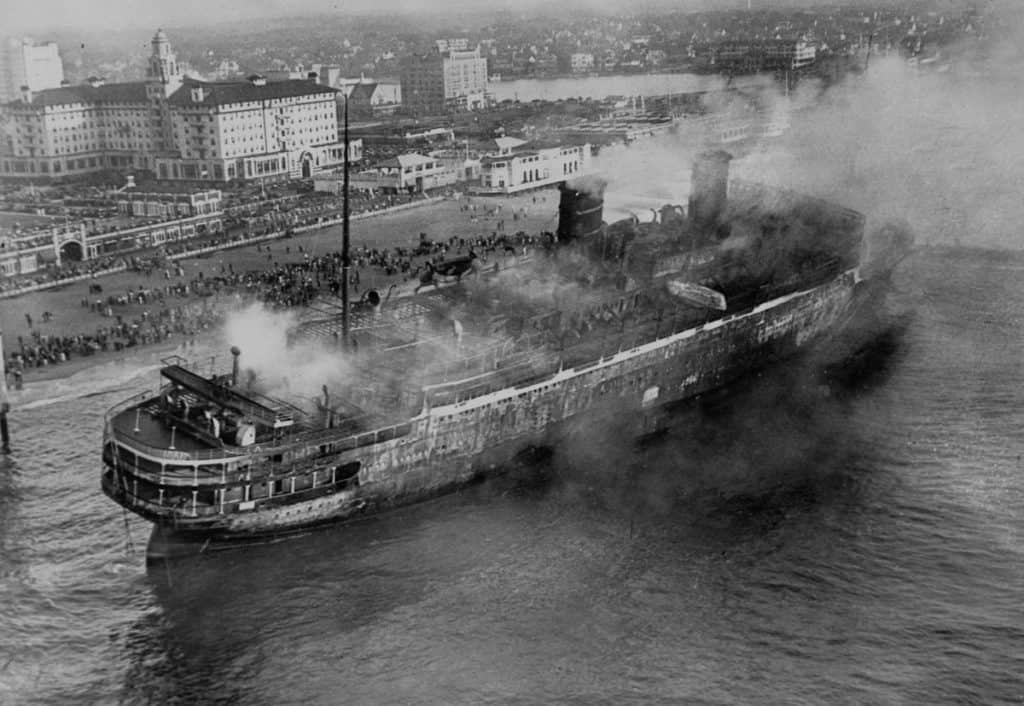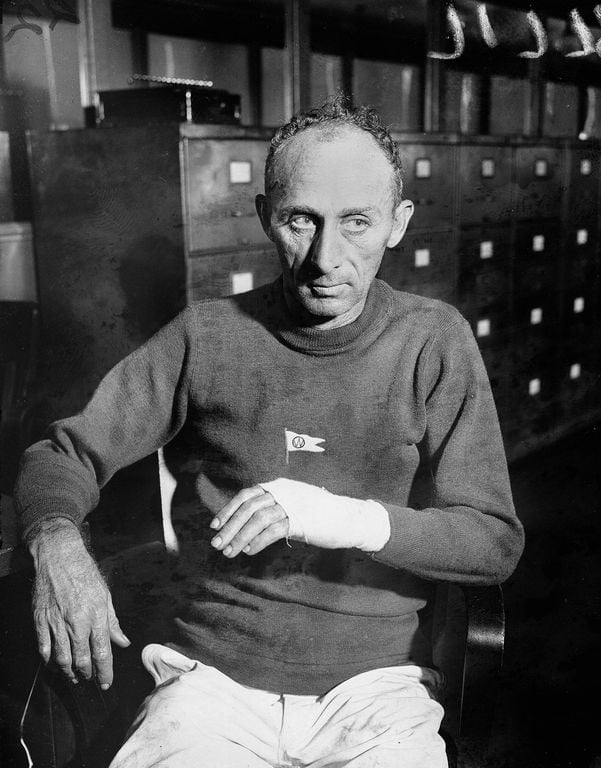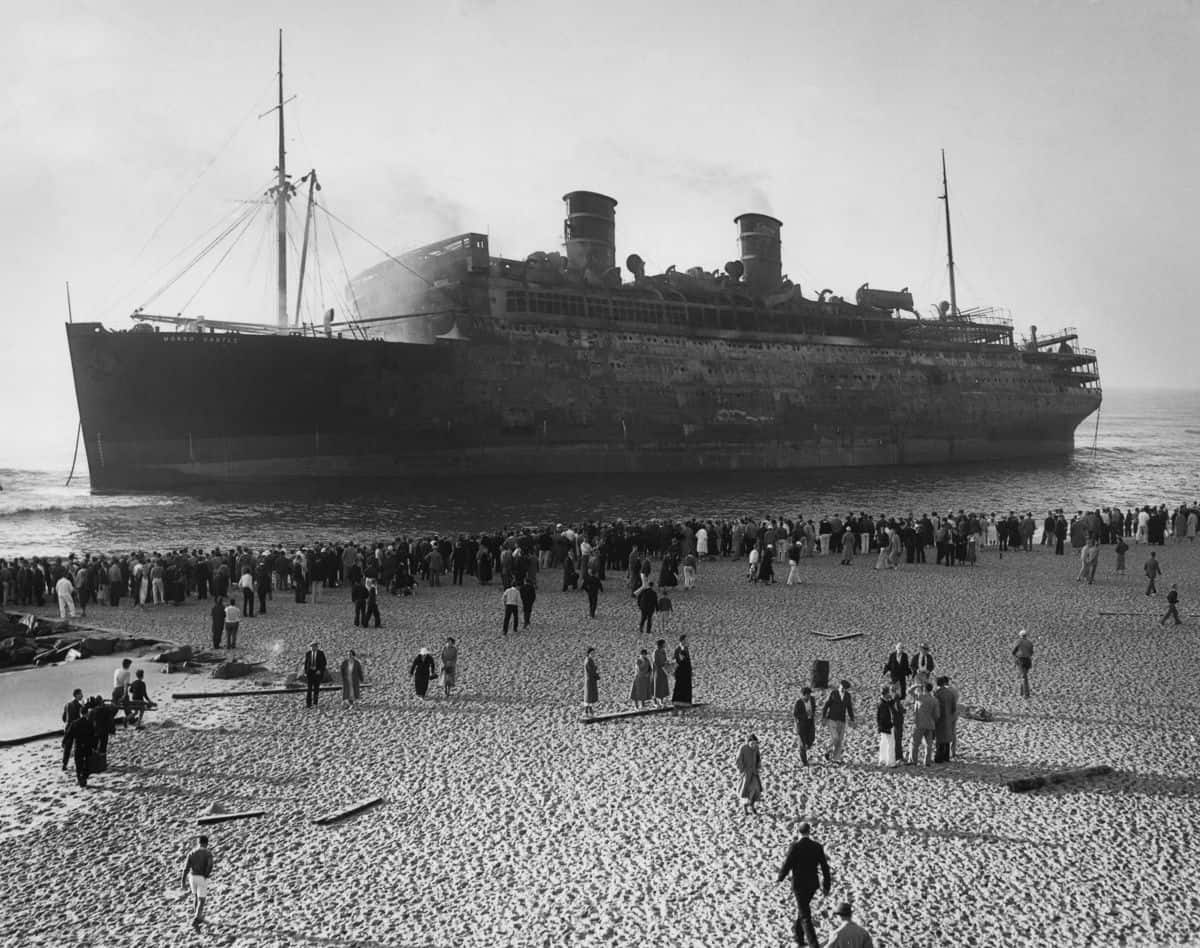Murder Mystery Onboard A Burning Prohibition Ship

Between 1930 and 1934 the SS Morro Castle made lucrative trips between New York and Havana, Cuba. In the midst of the Great Depression and alcohol prohibition in the United States, the Morro Castle offered 489 passengers an escape on a booze-fueled party cruise.
On the 5 Sept. 1934, she departed Havana and should have made it to New York in 58 hours. During the voyage north, an almost foreshadowing storm began to brew. After dinner on the 7th, Captain Wilmott retired to his cabin, complaining of stomach pains. Shortly after, he was found dead. Apparently from a heart attack, leaving Chief Officer Warms in command of the Morro Castle. As Morro Castle kept steaming to New York, the sea continued to grow.

Chief Officer Warms
Within a few hours of taking command, Warms was faced with a fire on B deck. Due to high winds, varnished wood, and flammable paint covering the ship, the fire spread quickly. The inexperienced crew put up a short and disorganised fight against the fire, transmitted an SOS signal and abandoned ship, leaving the (largely drunk) passengers to fend for themselves.
In the chaos and darkness, many passengers were unable to find a lifeboat, leaving them a choice between the fire or jumping over the side; many suffered neck injuries or were knocked unconscious when they hit the water due to their lifejackets pulling up suddenly around their necks. The rescue ships took awhile to get out to rescuers, and once on location the stormy seas made it difficult to reach survivors. In the end, 49 of the crew and 86 passengers out of the total of 549 people on board died. The next day, the remains of the ship ran aground in New Jersey.

The investigation
After the authorities finished their investigation they found that the crew had been poorly trained, resulting in an incompetent and uncoordinated response to the fire. With a poorly trained crew, the passengers were, unsurprisingly, badly explained the emergency procedures. In short, no one really knew what to do when the fire broke out; only half of the lifeboats had been deployed. With the poor safety standards of the time, the investigation would have ended here, if not for the suspicious double whammy of the captain’s death and the fire. Turns out, the situation was a bit of a powder keg; the crew was unhappy about their working conditions and in return, the captain was paranoid about saboteurs and mutineers. However, with a lack of any solid evidence, no one was charged.
A suspect emerges

George W. Rogers
Ironically, our suspect George Rogers, the chief radio engineer, had been hailed as a hero for being one of the few crew members to not abandon ship in order to save passengers. However, years later, it was discovered that fires had a habit of following him around; he had been a suspect in a fire at his previous job. After the Morro Castle fire, he started a radio repair shop, which failed and then suspiciously burned down.
George then got a job as a radio assistant with the Bayonne police department. Lieutenant Doyle, his boss, quickly became suspicious of George and started asking him questions about the Morro Castle fire. George then brought Lt. Doyle a fish tank heater, telling him it needed repairs. When Lt. Doyle plugged it in, it exploded and nearly killed him. George was found guilty of attempted murder, but 4 years later he was paroled in order to fight in WW2; he never saw any action as the military wisely decided he was a liability. With this lucky break, George enjoyed freedom until 1954, when he was convicted of the murder of a friend (who had loaned him money) and his friend’s daughter. He died 4 years later in prison.

Fireman brought back to shore after burning his hands



Towed to scrapyard after 6 months

You might like these!



